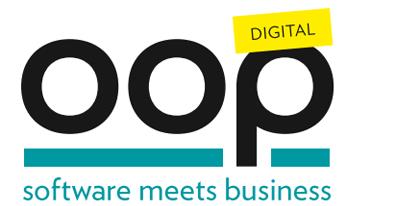
RÜCKBLICK AUF DAS PROGRAMM 2021
The Extended Business Model Canvas (EBMC) - Leveraging a Startup-Tool to an Enterprise-Artifact
The Extended Business Model Canvas (EBMC) links Lean Portfolio Management, System Thinking, Lean Product development, and agile development in a way suitable for established enterprises, not just startups.
Two additional components, the "Contribution to Strategy" and "Technical Debt," apply now to both operational and development values. Those components are supported by two special lenses that help agile teams to connect better, align, and achieve more business agility.
Target Audience: Architects, Business Owners, Portfolio Managers, Product Managers, POs, SMs, Agile Teams
Prerequisites: Scaled Agile Frameworks
Level: Advanced
Extended Abstract:
The business model canvas (BMC) developed by Osterwalder and Pigneur explains "how value is created, delivered and captured from an organizational perspective." The BMC excels through the addition of the simple yet effective Value Proposition Canvas (VPC). The BMC combined with the VPC unfolds the driving powers and key pivot points along the operational value stream. It is a valuable Business Agility artifact increasing transparency along the operational value stream.
To link development value streams to operational value streams, it is helpful to abandon the greenfield approach and extend the BMC by to additional components.
The two extensions are "Contribution to the Strategy" and "Technical Debt." Nearly every epic has to legitimate its strategic fit for purpose in a more transparent way. Technical debt is also a matter that has to be dealt with transparently, as it seldom will disappear in the short term.
In this interactive presentation, the participants will learn how the EBMC can be used to help our clients to thrive in the digital age. Depending on the level of audience participation, this will range from a presentation based on the Corona-Warn-App as a use case to an audience-specific workshop.
The secret sauce is: how do we break down Strategy and Technical debt. The presentation shows how these two components can be examined generically to increase transparency.
We do this in three steps:
#1
Recap the application of the BMC and VPC. Let us lookout for some pitfalls when dealing with a more complex intake when there is some ambiguity between the operational and development value stream and the mapping of funding to ARTs. We usually see this when there is a complex mashup between value streams, reverse demand, and regular business, BAU IT-demand, and multiple ARTs.
#2
We add "Contribution to the Strategy" to the BMC to map the complex intake described in #1 and link the greenfield BMC with strategic themes and the portfolio level to integrate the various usually concurring stakeholders.
#3
We add "Technical Debt" to enable the program layer to better participate in environments with complex interwoven system landscapes and numerous different components and platforms.
Kurt Cotoaga started as a research assistant using evolutionary algorithms to solve np-hard problems. Those fascinating problems are still unsolved ...
His first pivot brought him into the product manager role for large online brokerage websites where he fooled himself and others into mixing up causality and correlation. It was a tough ride in the epicenter of the dot-com bubble burst ...
Having been perpetually torn apart between trying to create business value and pretending to be predictable, he pivoted around 2005 towards agility as a survival kit. From projects via programs to portfolios via products - this finally worked!
The last pivot beamed him into the consulting world, where he helps clients thrive in the digital age as a Business Value addicted Digitalization Evangelist or Enterprise Transformation Implementer.

